Miracles of Jesus
According to the canonical Gospels of the Bible, Jesus Christ worked many miracles in the course of his ministry. These miracles may be categorized into four groups as cures, exorcisms, resurrection of the dead and control over nature.[1][2]
Some Christian authors argue that the miracles of Jesus were not merely acts of power, but that their chief element was love, and that each miracle includes specific teachings.[3] Jesus tried to keep the focus on his message, saying that is why he came.[Mk. 1:38]
To many Christians and Muslims,[4] the miracles represent actual historical events, while liberal Christians may consider these stories to be figurative.[5] Prior to the Age of Enlightenment they were considered to be accurate representations of the person and work of Jesus Christ. Major shifts in scientific and philosophical thinking during the Enlightenment resulted in similar shifts in theological thinking which began to question the consensus about the Gospels.[6]
Some scholars contend that empirical methods are unable to determine if a genuine miracle is historical, considering the issue theological or philosophical, while others present arguments for the historicity of miracles.[7][8][9] Islamic beliefs include many miracles of healing and of resurrection of the dead.[10]
Types and motives
In The Miracles of Jesus, H. Van der Loos discusses two main categories of miracles by Jesus: those that affected people, e.g., the Blind Man of Bethsaida and are called "healings", and those that "controlled nature", e.g., Walking on Water. The three types of healings are cures where an ailment is cured, exorcisms where demons are cast away and the resurrection of the dead. Among these miracles, the Transfiguration of Jesus is unique in that the miracle happens to Jesus himself.[11]
Christian authors have discussed the miracles of Jesus at length and assigned specific goals motives to each miracle, e.g., authors Pentecost and Danilson suggest that the Walking on Water miracle centered on the relationship of Jesus with his apostles, rather than their peril or the miracle itself. And that the miracle was specifically designed by Jesus to teach the apostles that when encountering obstacles, they need to rely on their faith in Christ, first and foremost.[12]
Authors Donahue and Harrington argue that the Daughter of Jairus miracle teaches that faith as embodied in the bleeding woman can exist in seemingly hopeless situations, and that through belief, healing can be achieved, in that when the woman is healed, Jesus tells here "Your faith has healed you".[13]
The miracles are outlined in this section and a visual representation, with a link to the each miracle's own page, appears in the gallery of miracles below. The structure and separation of miracles mostly follows Robert Maguire's "The miracles of Christ", John Clowes' "The miracles of Jesus Christ", and H. Van der Loos' "The Miracles of Jesus" listed in the references section.
| ||
| ||
| ||
| ||
|
Cures
The largest group of miracles mentioned in the New Testament involve cures. The Gospels give varying amounts of detail for each episode, sometimes Jesus cures simply by saying a few words, at other times employs material such as spit and mud. Generally they are recorded in the Synoptic Gospels but not in the Gospel of John.
The blind
The canonical Gospels report four separate cases of Jesus healing the blind. The Gospel of Mark [8:22-26] is the only place that tells of Jesus healing the Blind man in Bethsaida.
Each of the three synoptic gospels tell of Jesus healing the blind near Jericho, as he passed through that town, shortly before his passion. The Mark [10:46-52] tells only of a man named Bartimaeus being present and healed, as Jesus left Jericho, making him one of the few named people to be cured by Jesus. Matthew [20:29-34] is a similar account of two blind men being healed outside of Jericho, but gives no names. Luke [18:35-43] also tells of two unnamed blind men, but seems to place the event instead as when Jesus approached Jericho. The Synoptics state that Jesus met a beggar (Mark gives the name: bar-Timai or son of Timai) who, though blind, still identified Jesus as the Jewish Messiah; Jesus said that the man's faith has healed him, and he "received his sight," and was allowed to follow Jesus.
The Gospel of Matthew [9:27-31] also reports of Jesus healing two blind men in Galilee, at some earlier time, who also called him "Son of David." Jesus touched their eyes and restored their sight.
Healing the man blind from birth is discussed in the Gospel of John,[9:1-12] and is placed during the Festival of Tabernacles, about six months before his passion. Jesus stated that the man's blindness was not because either the man or his parents sinned. Jesus mixed spittle with dirt to make a mud mixture, which he placed in the man's eyes. Jesus then asked the man to wash his eyes in the Pool of Siloam. This done, the man's sight returned.
Lepers
The Jesus cleansing a leper miracle appears in Matthew 8:1-4, Mark 1:40-45 and Luke 5:12-16. Early in Jesus' ministry, he healed a leper, whom he then instructed to offer the requisite ritual sacrifices as proscribed by the Deuteronomic Code and Priestly Code. Jesus instructed the ex-leper not to tell anyone who had healed him; but the man disobeyed, increasing Jesus' fame, and thereafter Jesus withdrew to deserted places, but was followed there.
In the Cleansing ten lepers miracle, Lk. 17:11-19 states that while on his way to Jerusalem, Jesus sent ten lepers, who had sought his assistance, to the priests, and that they were healed as they went, but that the only one that came back to thank Jesus was a Samaritan.
Paralytics
Healing the paralytic at Capernaum appears in Matthew 9:1-8 , Mark 2:1-12 and Luke 5:17-26. The Synoptics state that a paralytic was brought to Jesus on a mat; Jesus told him to get up and walk, and the man did so. Jesus also told the man that his sins were forgiven, which irritated the Pharisees. Jesus is described as responding to the anger by asking whether it is easier to say that someone's sins are forgiven, or to tell the man to get up and walk. Mark and Luke state that Jesus was in a house at the time, and that the man had to be lowered through the roof by his friends due to the crowds blocking the door.
A similar cure is described in the Gospel of John as the Healing the paralytic at Bethesda[Jn 5:1-18] and occurs at the Pool of Bethesda. In this cure Jesus also tells the man to take his mat and walk.[Jn 5:1-18] [Mt 12:9-13]
Women
The Cure of a bleeding woman miracle appears in Mark 5:21-43, Matthew 9:18-26 and Luke 8:40-56, along with the miracle of the Daughter of Jairus.[14] The Gospels state that while heading to Jairus' house Jesus was approached by a woman who had been suffering from bleeding for 12 years, and that she touched Jesus' cloak (fringes of his garment) and was instantly healed. Jesus turned about and, when the woman came forward, said "Daughter, your faith has healed you, go in peace".
Healing the mother of Peter's wife. The Synoptics[15] describe Jesus as healing the mother-in-law of Simon Peter when he visited Simon's house in Capernaum, around the time of Jesus recruiting Simon as an Apostle (Mark has it just after the calling of Simon, while Luke has it just before). The Synoptics imply that this led other people to seek out Jesus.
Jesus healing an infirm woman appears in Luke 13:10-17. While teaching in a synagogues on a Sabbath, Jesus cured a woman who had been crippled by a spirit for eighteen years and could not stand straight at all.
Men
Healing a man with dropsy is described in Luke 14:1-6. In this miracle, Jesus cured a man with dropsy at the house of a prominent Pharisee on the Sabbath. Jesus justified the cure by asking: "If one of you has a child or an ox that falls into a well on the Sabbath day, will you not immediately pull it out?"
In the Healing of the man with a withered hand miracle,[16] the Synoptics state that Jesus entered a synagogue on Sabbath, and found a man with a withered hand there, whom Jesus healed, having first challenged the people present to decide what was lawful for Sabbath—to do good or to do evil, to save life or to kill. The Gospel of Mark adds that this angered the Pharisees so much that they started to contemplate killing Jesus.
The Healing the deaf mute of Decapolis miracle only appears in the Gospel of Mark.[7:31-37] The Gospel states that Jesus went to the Decapolis and met a man there who was deaf and mute, and cured him. Specifically, Jesus first touched the man's ears, and touched his tongue after spitting, and then said Ephphatha!, an Aramaic word meaning Be opened.
Other
The Healing the Centurion's servant miracle is reported in Matthew 8:5-13 and Luke 7:1-10. These two Gospels narrate how Jesus healed the servant of a Roman Centurion in Capernaum. John 4:46-54 has a similar account at Capernaum, but states that it was the son of a royal official who was cured at a distance.
Jesus healing in the land of Gennesaret appears in Matthew 14:34-36 and Mark 6:53-56. As Jesus passes through Gennesaret all those who touch his cloak are healed.
Matthew 9:35-36 also reports that after the miracle of Jesus exorcising a mute, Jesus went through all the towns and villages, teaching in their synagogues, proclaiming the good news of the kingdom and healing every disease and sickness.
Exorcisms
According to the three Synoptic Gospels, Jesus performed many exorcisms of demoniacs. These incidents are not mentioned by the Gospel of John.
Jesus pointed to his ability to cast out demons as a sign of his Messiahship, and he empowered his disciples to do the same in His name.[17]
The seven major exorcism accounts in the Synoptic Gospels which have details, and imply specific teachings, are:
- Exorcism at the Synagogue in Capernaum, where Jesus exorcised an evil spirit who cried out, "What do you want with us, Jesus of Nazareth? Have you come to destroy us? I know who you are—the Holy One of God!".[Mk 1:21-28] [Lu 4:31-37]
- Exorcising the Gerasenes demonic where people had tried to chain up a demonic but he had escaped, and lived in caves, and roamed the hills, screaming. Jesus inquired the man's name, but is told by the man/demons that his name is Legion, "...for we are many". The demons asked to be expelled into a group of swine, which Jesus did, and thereafter the pigs fell into a lake and drowned. The pig owners tell the townsfolk what had happened, and when the townsfolk see that the man is now sane, they besought Jesus to leave "for they were taken with great fear". The man, on the other hand, informs the whole of the decapolis what had happened.[18]
- Exorcising the Canaanite woman's daughter appears in The woman asks Jesus to heal her daughter, but Jesus says "I am not sent but unto the lost sheep of the house of Israel". The woman replies, "Lord: yet the dogs eat of the crumbs which fall from their masters' table", whereupon Jesus tells her that her daughter is healed, and when the woman returns home she finds that this is true.[Mt. 15:21-28] [Mk. 7:24-30]
- Exorcising the blind and mute man appears in Matthew 12:22-32, Luke 11:14-23 and Mark 3:20-30. Jesus healed a demon-possessed man who was blind and mute, so that he could both talk and see. People were astonished and said, "Could this be the Son of David?" But the Pharisees said that it is only by Beelzebul, that he drives out demons, but Jesus rebuked them.
- In Exorcising a boy possessed by a demon in Matthew 17:14-21, Mark 9:14-29, Luke 9:37-49, a boy possessed by a demon is brought forward to Jesus straight after Jesus' transfiguration. The boy foams at the mouth, gnashes his teeth, becomes rigid and involuntarily falls into both water and fire. Jesus' followers cannot expel the demon, and Jesus condemns the people as unbelieving, but when the father of the boy questions if Jesus can heal the boy, Jesus says everything is possible for those that believe, so the father says he believes that the boy could be healed, and Jesus does so.[19]
- The miracle of Jesus exorcising at sunset appears in the Synoptic Gospels just after Healing the mother of Peter's wife, namely in Matthew 8:16-17, Mark 1:32-34 and Luke 4:40-41 In this miracle Jesus heals people and drives out many demons who know he is Christ.
- The miracle of Jesus exorcising a mute appears in Matthew 9:32-34 immediately following the account of Jesus healing two blind men miracle. A man who was demon-possessed and could not talk was brought to Jesus. And when the demon was driven out, the man who had been mute spoke.
There are also brief mentions of other exorcisms, e.g.:
- Jesus had driven seven demons out of Mary Magdalene. [Mk. 16:9] [Lu. 8:2]
- Jesus continued to cast out demons even though Herod Antipas wanted to kill him.[Lu. 13:31-32]
Resurrection of the dead
All four Canonical Gospels report Jesus' own resurrection from the dead but the Gospels also relate three other occasions on which Jesus calls a dead person back to life:
- Daughter of Jairus.[Mk. 5:21-43] Jairus, a major patron of a synagogue, asks Jesus to heal his daughter, but while Jesus is on his way, men tell Jairus that his daughter has died. Jesus says she was only sleeping and wakes her up with the word Talitha koum!.
- The Young Man from Nain.[Lk. 7:11-17] A young man, the son of a widow, is brought out for burial in Nain. Jesus sees her, and his pity causes him to tell her not to cry. Jesus approaches the coffin and tells the man inside to get up, and he does so.
- The Raising of Lazarus.[Jn. 11:1-44] A close friend of Jesus who had been dead for four days is brought back to life when Jesus commands him to get up.
Control over nature
The Gospels include eight pre-resurrection accounts concerning Jesus' power over nature:
- Turning Water into Wine—at a wedding, when the host runs out of wine, the host's servants fill vessels with water at Jesus' command, then a sample is drawn out and taken to the master of the banquet who pronounces the content of the vessels as the best wine of the banquet.
- The miracle of draught of fishes[Lk 5:1-11] takes place early in Jesus's ministry and results in Saints Peter, James, son of Zebedee and John joining Jesus as his Apostles.
- The Feeding of the 5000 and of the 4000 men—Jesus, praying to God and using only a few loaves of bread and several fish, feeds thousands of men, along with an unspecified number of women and children; there are even a number of baskets of leftovers afterward.
- Walking on water—Jesus walked on a lake to meet a boat.
- Transfiguration of Jesus—Jesus climbed a mountain and was changed so that his face glowed.[20]
- Calming the storm - during a storm, the disciples woke Jesus, and he rebuked the storm causing it to become calm. Jesus then rebukes the disciples for lack of faith.
- Finding a Coin in the fish's mouth is reported in Matthew 17:24-27.
- The Cursing of the Fig Tree—Jesus cursed a fig tree, and it withered.
Post-resurrection miracles attributed to Jesus are also recorded in the Gospels:
- A similar miracle to the miracle of draught of fishes—also called the catch of 153 fish, to distinguish it from the account in Luke—is reported in the Gospel of John 21:1-14 but takes place after the Resurrection of Jesus.
Interpretations
|
General interpretation
Christians in general believe that Jesus' miracles were actual historical events and that his miraculous works were an important part of his life, attesting to his divinity and the Hypostatic union, i.e., the dual natures of Jesus as God and Man. Christians believe that while Jesus' experiences of hunger, weariness, and death were evidences of his humanity, the miracles were evidences of his deity.[21][22][23]
Since according to the Gospel of John[20:30] it was impossible to narrate all of the miracles performed by Jesus, the Catholic Encyclopedia states that the miracles presented in the Gospels were selected for a twofold reason: first for the manifestation of God's glory, and then for their evidential value. Jesus referred to his "works" as evidences of his mission and his divinity, and in John 5:36 he declared that his miracles have greater evidential value than the testimony of John the Baptist.[24][25][26] John 10:37-38 quotes Jesus as follows:
"Do not believe me unless I do what my Father does. But if I do it, even though you do not believe me, believe the miracles, that you may know and understand that the Father is in me, and I in the Father."
Christian authors generally view the miracles of Jesus not merely as acts of power, but as works of love and mercy: they were performed not with a view to awe men by the feeling of omnipotence, but to show compassion for sinful and suffering humanity. And each miracle involves specific teachings.[27][28][29]
In Christian teachings, the miracles were as much a vehicle for Jesus' message as were his words. Many of the miracles emphasize the importance of faith, for instance in Cleansing ten lepers,[Lk 17:19] Jesus did not say: "My power has saved you" but said:[30][31]
"Rise and go; your faith has saved you."
Similarly, in the Walking on Water miracle, Apostle Peter learns an important lesson about faith in that as his faith wavers, he begins to sink.[Mt 14:34-36] [32]
Liberal Christianity
Liberal Christians place less emphasis on miraculous events associated with the life of Jesus than on his teachings. The effort to remove "superstitious" elements from Christian faith dates to intellectual reformist Christians such as Erasmus and the Deists in the 15th–17th centuries.[33] In the 19th century, self-identified liberal Christians sought to elevate Jesus' humane teachings as a standard for a world civilization freed from cultic traditions and traces of "pagan" belief in the supernatural.[34] The debate over whether a belief in miracles was mere superstition or essential to accepting the divinity of Christ constituted a crisis within the 19th-century church, for which theological compromises were sought.[35]
Attempts to account for miracles through scientific or rational explanation were mocked even at the turn of the 19th–20th century.[36] A belief in the authenticity of miracles was one of five tests established in 1910 by the Presbyterian Church to distinguish true believers from false professors of faith such as "educated, 'liberal' Christians."[37]
Contemporary liberal Christians may prefer to read Jesus' miracles as metaphorical narratives for understanding the power of God.[38] Not all theologians with liberal inclinations reject the possibility of miracles, but may reject the polemicism that denial or affirmation entails.[39]
Critical analysis
Aside from literal interpretations, and assumptions of them being fiction, numerous other explanations of the events have been put forward throughout history. Beginning with the Gnostics, it has been suggested that the reports of alleged miracles were actually intended just as allegories, not as factual events. It has also been argued that bar-Timai is a direct reference to Plato's Timaeus, a philosophical work, and that bar-Timai symbolizes the Hellenic audience of Mark's gospel, and that curing his blindness is a metaphor for the Gospel giving a revelation to the audience.[Mark 10]
A study by the Jesus Seminar of what aspects of the Gospel accounts are likely to be factual acknowledged that Jesus was considered a healer in his time, but described Jesus' healings in modern terms, relating them to "psychosomatic maladies". The scholars of the Jesus Seminar had difficulty believing the stories in the Gospels described actual events, finding only six of the nineteen healings to be "probably reliable".[40] Most scholars of the Jesus Seminar believe Jesus practiced exorcisms, as Josephus, Philostratus, and others wrote about other contemporary exorcists, but do not believe the gospel accounts were accurate reports of specific events, though most scholars doubted whether demons exist.[41] They did not find any of the nature miracles to be historical events.[42]
[edit] List of miracles in the four Gospels
Over the centuries Christian authors have reviewed, discussed and analyzed the miracles attributed to Jesus in the Gospels. In most cases, authors associate each miracle with specific teachings that reflect the message of Jesus.[43] Miracles performed by Jesus are mentioned in two sections of the Quran (suras 3:49 and 5:110) in broad strokes with little detail or comment.[44]
The exact number of miracles depends on how miracles are counted, e.g., in the Daughter of Jairus miracle a woman is cured and a child is resurrected, but the two events are narrated within the same paragraphs of the Gospels, and are usually dealt with together, and the fact that the child was 12 years old and the woman had been ill for 12 years has been the subject of various interpretations.
It is not always clear when two reported miracles refer to the same event, for instance in the Healing the Centurion's servant, the Gospels of Matthew[8:5-13] and Luke[7:1-10] narrate how Jesus healed the servant of a Roman Centurion in Capernaum at a distance. The Gospel of John[4:46-54] has a similar account at Capernaum, but states that it was the son of a royal official who was cured at a distance.
Supernatural events such as the Annunciation reported in the Gospels prior to the start of the ministry of Jesus, and events following his Resurrection are generally not included in the list of miracles by Jesus, and neither is the use of "supernatural knowledge" such as in the case of the Woman at the well.[45][46][47]
It should be noted that the Gospel of John[20:30] specifically states that the miracles it recorded were but a portion of the miracles that Jesus actually performed.
The table below, provides a list of the miracles of Jesus from the start of his ministry, up to his Crucifixion in the canonical Gospels. However, very short references─such as Matthew 4:23 which briefly states that Jesus cured many people of many diseases─have not been classified as specific miracles since no details, and hence no teaching, have been associated with them. The chronological order of the miracles is difficult to determine, so this list should not be viewed as a sequence.
List of miracles found outside the New Testament
Accounts of Jesus performing miracles are also found outside the New Testament. Later, 2nd century texts, called Infancy Gospels, narrate Jesus performing miracles during his childhood.
| Miracle | Sources |
| Rich young man raised from the dead | Secret Gospel of Mark 1 |
| Water controlled and purified | Infancy Thomas 2.2 |
| Made birds of clay and brought them to life | Infancy Thomas 2.3 |
| Resurrected dead playmate Zeno | Infancy Thomas 9 |
| Healed a woodcutter's foot | Infancy Thomas 10 |
| Held water in his cloak | Infancy Thomas 11 |
| Harvested 100 bushels of wheat from a single seed | Infancy Thomas 12 |
| Stretched a board that was short for carpentry | Infancy Thomas 13 |
| Resurrected a teacher he earlier struck down | Infancy Thomas 14-15 |
| Healed James' viper bite | Infancy Thomas 16 |
| Resurrected a dead child | Infancy Thomas 17 |
| Resurrected a dead man | Infancy Thomas 18 |
| Miraculous Virgin Birth verified by midwife | Infancy James 19-20 |


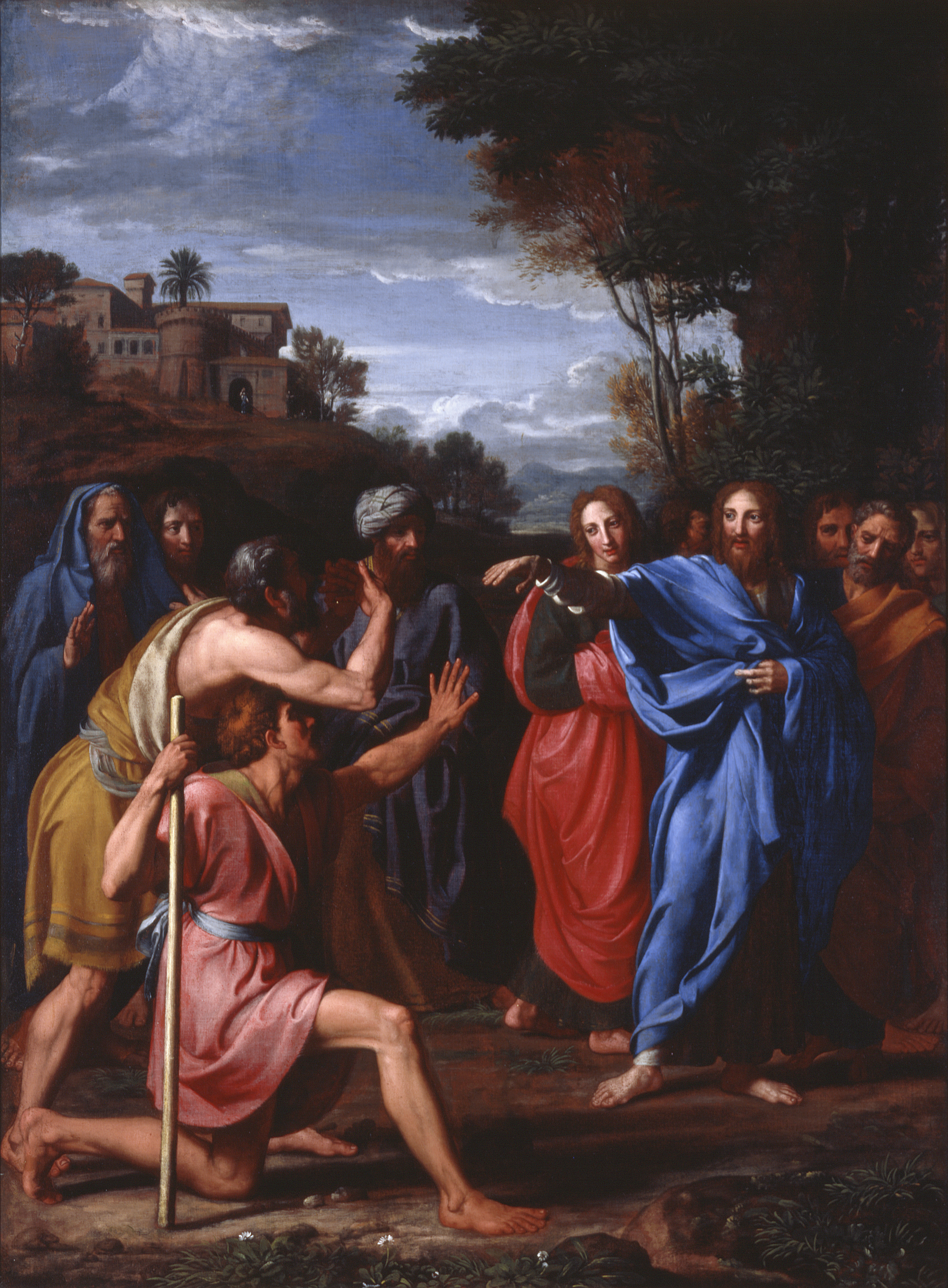












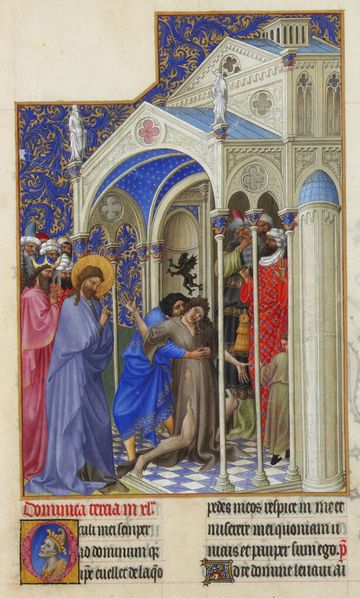
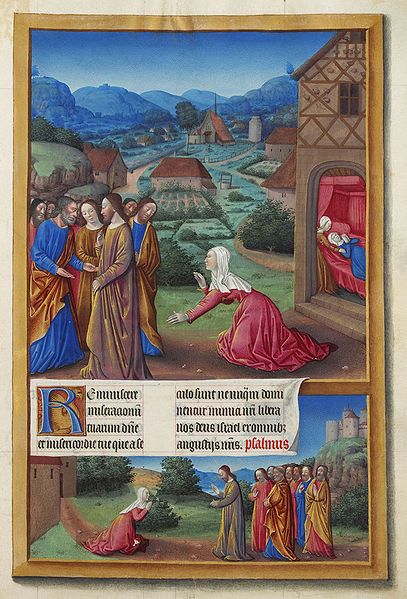
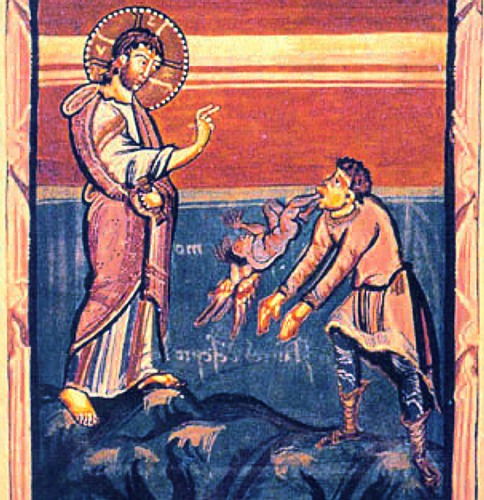


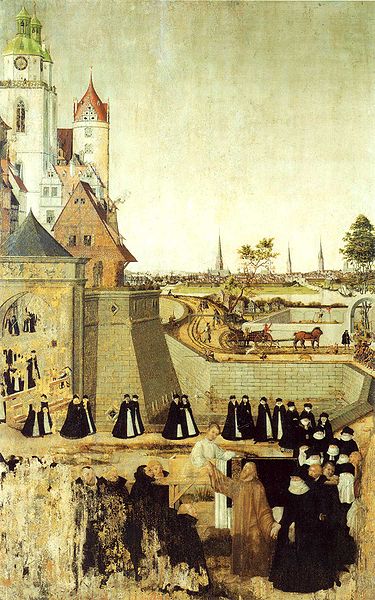


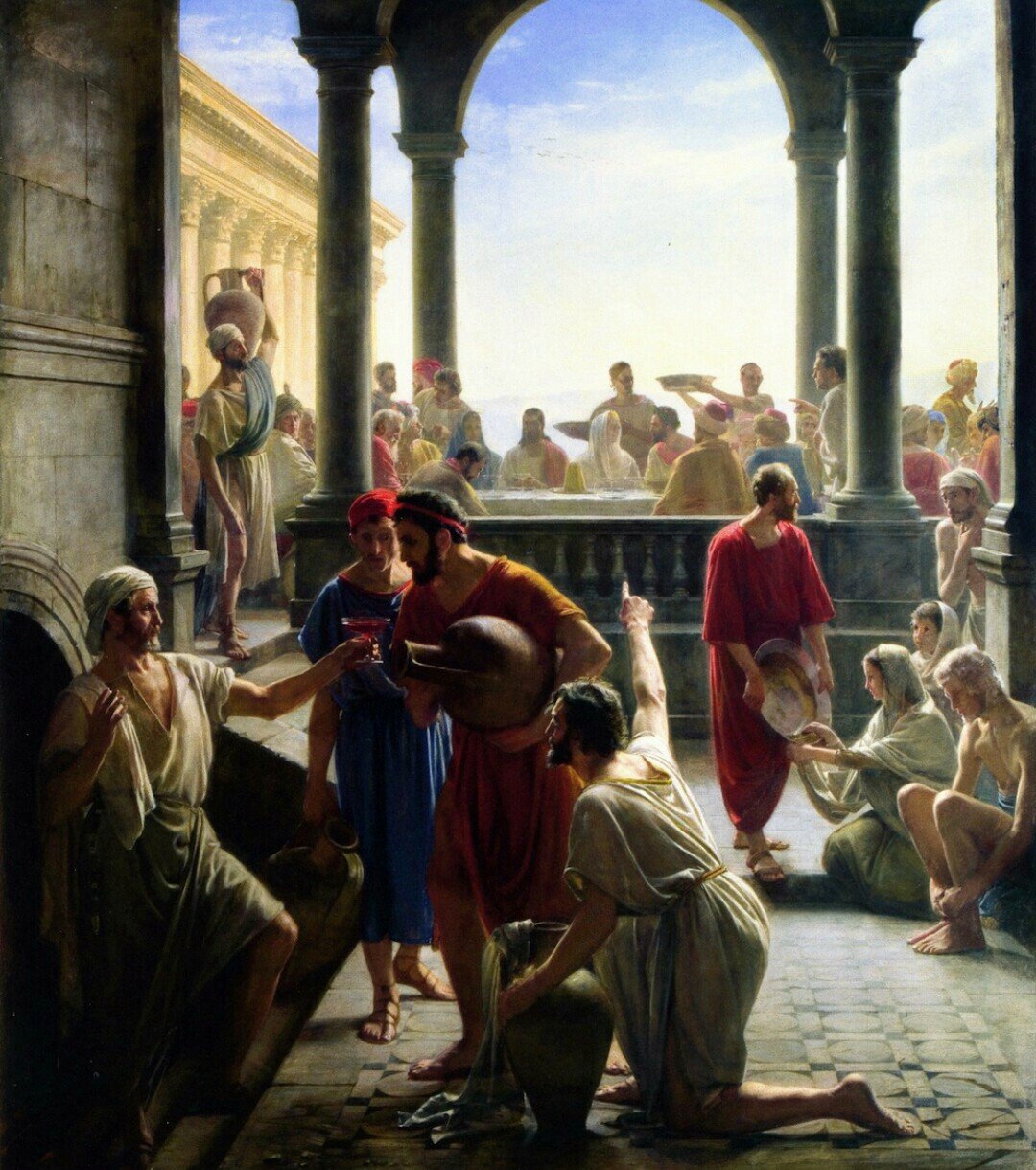


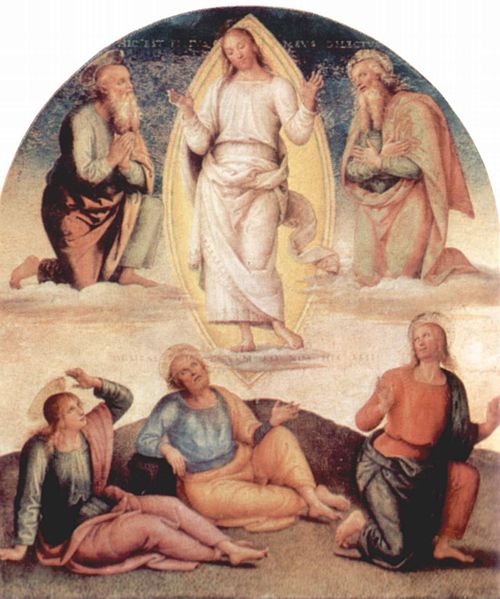
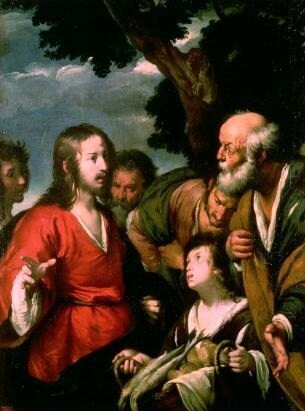


Inga kommentarer:
Skicka en kommentar